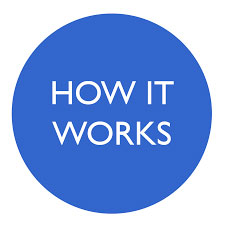The Elementary and Secondary School Emergency Relief Fund (ESSER) is a federally funded emergency relief program that offers urgently needed assistance to the majority of America’s nonprofit private schools. Despite the statutory references to Title I of the Elementary and Secondary Education Act, accompanying guidance makes it clear that this is not a Title I program (see below). Funds can be used for a wide array of purposes far exceeding those of any existing federally funded program. There is no “supplement not supplant” restriction, and participating schools will not be deemed “recipients of federal financial assistance.” Here’s what your private school needs to know about ESSER. (Posted 5/4/2020. Please revisit this page, periodically, to check for updates.)
UPDATE (10/12/2020)

On October 9, 2020, the U.S. Department of Education released a revised non-regulatory guidance document titled, “Providing Equitable Services to Students and Teachers in Non-Public Schools Under the CARES Act Programs.” The two CARES Act Programs to which the new guidance applies are the Elementary and Secondary School Emergency Relief fund (ESSER) and the Governor’s Emergency Education Relief fund (GEER). Whereas non-regulatory guidance doesn’t possess the force and effect of law, state departments of education and local education authorities almost always treat guidance as if it does. The reason for doing so is this: if a complaint over implementation of the associated law was to make its way to the USDE, the Department would be highly unlikely to make a conclusive finding that contradicted its own guidance.
Here are some of the features of the revised guidance of which private school leaders ought to be aware:
May students and educators at for-profit private schools receive equitable services?
No. The guidance makes it clear that: “A for-profit non-public school is not eligible to receive equitable services for its students and teachers under the CARES Act programs. (See item #3.)
Which LEA is responsible for providing services?
The underlying law requires equitable services to be furnished, “…in the same manner as provided under section 1117 of the ESEA of 1965…” Section 1117 of ESEA is synonymous with Title I or the Every Student Succeeds Act, which requires the LEA in which an eligible private school student resides to provide equitable services. The revised CARES Act guidance, however, specifies that, “…the LEA in which a non-public school is located is responsible for providing equitable services to students and teachers in the school…” (See item #4.)
Must an LEA offer to provide equitable services to all nonprofit private schools within its catchment area?
Yes. An LEA that receives an ESSER or GEER fund allocation must offer to provide equitable services to students and teachers in all nonprofit private schools “…even if a non-public school has not previously participated under Title I, Part A or Title VIII of the ESEA.” In other words, previous participation in federal education programs is not a requirement. (See item #8.)
Are all students and educators in nonprofit private schools eligible to receive equitable services under the relevant CARES Act programs?
Yes. This is an important element of the guidance, as under provisions of Title I, receipt of services is limited to low-achieving students, only. As the guidance makes clear: “All students and teachers in a non-public school are eligible to receive equitable services under the CARES Act programs…” There are two exceptions to this prescription: 1) A governor may decide to target GEER funds for a specific purpose, or to a specific population of recipients of service; 2) an SEA (i.e., state department of education) may, similarly, target that portion of ESSER fund dollars it is permitted to reserve and direct. (SEAs are permitted to reserve up to 10 percent of ESSER funds, and must allocate no fewer than 90 percent of such funds to LEAs.) For example, if either the Governor, or the California Department of Education chose to target some portion of GEER, or state-reserved ESSER funds for the benefit of low-income students, if the funds were allocated to LEAs, equitable services would be, similarly, targeted to low-income students in nonprofit private schools within the participating LEAs. (See item #9.)
How does an LEA determine the amount of funding that must be reserved to provide equitable services under the two relevant  CARES Act programs?
CARES Act programs?
The guidance explains that, “An LEA must calculate the proportional share in accordance with section 1117(a)(4)(A) of the ESEA. In doing so, it may use the proportional share calculated for Title I purposes from either school year 2019-2020 or 2020-2021.” This element of the revised guidance may introduce some confusion (and require additional clarification), as under provisions of Title I, LEAs determined the proportional share of funding by counting private schools students from low-income households located within the LEA (as well as within Title I participation areas), to provide services to low-achieving pupils also residing within those areas. Under the relevant CARES Act programs, however, the guidance indicates that it is not the residence of a pupil, but the location of a private school that establishes responsibility for the provision of service. (See item 10B.)
Does the “supplement, not supplant” provision apply to relevant CARES Act programs?
No. The guidance makes this clear: “Unlike Title I, the CARES Act does not have a supplement not supplant requirement.” In fact, the  guidance goes even further in stating: “The requirements in 34 C.F.R. § 200.66 do not apply to equitable services under the CARES Act programs.” This is an important prescription. A “supplement, not supplant” requirement means that federal funds may not be used in lieu of expenditures that are normally found in a school’s operating budget. The C.F.R. (Code of Federal Regulations) citation references a rule prohibiting Title I services from accruing to the benefit of a private school. (Instead, the services must serve the needs of intended pupils.) The updated guidance takes the view that neither this limitation, nor the “supplement not supplant” requirement are applicable to equitable services provided by ESSER and/or GEER funding. (See item #12.)
guidance goes even further in stating: “The requirements in 34 C.F.R. § 200.66 do not apply to equitable services under the CARES Act programs.” This is an important prescription. A “supplement, not supplant” requirement means that federal funds may not be used in lieu of expenditures that are normally found in a school’s operating budget. The C.F.R. (Code of Federal Regulations) citation references a rule prohibiting Title I services from accruing to the benefit of a private school. (Instead, the services must serve the needs of intended pupils.) The updated guidance takes the view that neither this limitation, nor the “supplement not supplant” requirement are applicable to equitable services provided by ESSER and/or GEER funding. (See item #12.)
Is a private school whose students and educators receive equitable services under CARES Act programs deemed a “recipient of federal financial assistance?”
No. The guidance makes clear that: “A non-public school whose students and teachers receive equitable services under the CARES Act programs is not a ‘recipient of Federal financial assistance’.” The guidance also takes pains to underscore the requirement that the federal funds in question are to remain under the control of a public agency (typically an LEA), and that “…title to materials, equipment and property purchased with such funds, must be in a public agency.” (See items #5 and #13.)
What services are available to private school students and educators?
The updated guidance explains: “In general, the services and benefits available to non-public school students and teachers are the same as those available to public school students and teachers.” This view is accompanied by the same potential limitations that apply to the targeting of GEER or state-reserved ESSER funds to specific recipient groups (as noted above). (See item #14.)
 Who is responsible for initiating the consultation process?
Who is responsible for initiating the consultation process?
According to the guidance, “…an LEA is responsible for initiating the consultation process. It must contact officials in all non-public schools in the LEA to notify them of the opportunity for their students and teachers to obtain equitable services under the CARES Act programs.” In the event that no such outreach is made, the guidance notes that “non-public school officials…may contact the LEA or State ombudsman to inquire about equitable services under the CARES Act programs.” California’s ombudsman is Sylvia Hanna. Her email address is: SHanna@cde.ca.gov
The guidance also suggests that, as is true for both Title I and those federal programs covered under section 8501 of ESSA, during consultation, “…the LEA and non-public school officials shall both have the goal of reaching agreement on how to provide equitable and effective services.” Also, “…if an LEA disagrees with the views of non-public school officials during consultation, the LEA must provide in writing to the non-public school officials the reasons why the LEA disagrees.” (See items #6 and #7.)
UPDATE (9/30/2020)
A federal judge has granted an injunction that, effectively, strikes down a U.S. Department of Education regulation that may have enabled private school students and educators to receive emergency relief assistance under the federal CARES Act on the basis of proportionate enrollment. With the ruling handed down by Judge Dabney Friedrich, funding levels for equitable services under the Elementary and Secondary School Emergency Relief Fund (ESSER) and Governor’s Emergency Relief Fund (GEER) must be calculated on the basis of a poverty count, as is employed under Title I of the Every Student Succeeds Act (ESSA). The injunction issued by Judge Friedrich, who was appointed to the U.S. District Court for the District of Columbia by President Donald Trump, will apply nationwide. (Similar injunctions had already been granted in suits filed in Washington and California.) Politico reports the development, here.
The preceding chain of events began with the inclusion of language in the CARES Act statute requiring equitable services for private school pupils and educators to be furnished “in the same manner as provided under section 1117 of the Elementary and Secondary Education Act,” which is Title I of ESSA. On April 30, 2020, the USDE issued non-regulatory guidance that interpreted “in the same manner…” to mean that funding was to be calculated on the basis of total private school enrollment as a proportion of total public-plus-private school enrollment in a school district.
When the public education establishment and allied special interest groups pushed back against the Department’s interpretation, the USDE  promulgated an interim final rule (IFR), giving local educational authorities (LEAs, i.e., public school districts) the opportunity to employ either a proportionate enrollment approach, or the Title I approach of calculating funds to be set aside for equitable services. If, however, an LEA opted to use the Title I method, it would be required to restrict its own ESSER, or GEER funding to its Title I schools. In response, opponents of the guidance and IFR filed a series of lawsuits seeking injunctive relief.
promulgated an interim final rule (IFR), giving local educational authorities (LEAs, i.e., public school districts) the opportunity to employ either a proportionate enrollment approach, or the Title I approach of calculating funds to be set aside for equitable services. If, however, an LEA opted to use the Title I method, it would be required to restrict its own ESSER, or GEER funding to its Title I schools. In response, opponents of the guidance and IFR filed a series of lawsuits seeking injunctive relief.
On September 25, 2020, in a letter addressed to the Council of Chief State School Officers, U.S. Secretary of Education Betsy DeVos announced that the USDE would not appeal the injunctions. The letter also indicated that the USDE, “…will not take any action against States or local districts that followed the guidance and/or the IFR prior to notice of the court’s decision. What this likely means is that the federal government will not require states and/or school districts that may already have provided CARES Act equitable services using a proportional total enrollment count to determine funding levels, to furnish compensation for any funds obligated under such a determination.
For California’s private schools, these developments mean that ESSER and GEER funds should be flowing from the state to local public school districts across the state, and that consultation between LEAs and private school representatives should now be taking place in earnest. (See “Consultation” in the right-hand column.) The amount of funding available to provide equitable services to private school pupils and educators will now be substantially less than would have been the case under provisions of the now defunct (April 30) federal guidance. We are currently awaiting the issuance of updated information from the California Department of Education, spelling out how LEAs are to furnish equitable services under both ESSER and GEER. Stay tuned!
What is “ESSER?”
ESSER is the popular nickname given to the Elementary and Secondary School Emergency Relief Fund. It is one of three major programs comprising the Education Stabilization Fund component of the Coronovirus Aid, Relief, and Economic Security Act, commonly known as the “CARES Act.”
- CARES Act Section 18002: Governor’s Emergency Education Relief Fund (GEER) – Total Funding: $2,953,230,000
- CARES Act Section 18003: Elementary and Secondary School Emergency Relief Fund (ESSER) – Total Funding: $13,229,265,000
- CARES Act Section 18004: Higher Education Emergency Relief Fund (HEERF) – Total Funding: $14,000,000
Where does the money go?
ESSER funding flows from the U.S. Department of Treasury to the U.S. Department of Education. After a state submits a simple application and  obtains approval from the USDE – a process the Department has promised to complete within three days – dollars will be apportioned to individual states on the basis of a formula that is weighted for the prevalence of poverty. In California, the funds will be received by the California Department of Education (CDE). Because California has a higher prevalence of poverty, it will receive a proportionately greater share of ESSER funds, an amount that comes to approximately $1.6 billion. The law requires no less than 90 percent of the ESSER funding received by a state to be passed along to local educational agencies. (In this article, the terms ‘local educational agency’, ‘LEA’, and ‘public school district’ are used interchangeably.)
obtains approval from the USDE – a process the Department has promised to complete within three days – dollars will be apportioned to individual states on the basis of a formula that is weighted for the prevalence of poverty. In California, the funds will be received by the California Department of Education (CDE). Because California has a higher prevalence of poverty, it will receive a proportionately greater share of ESSER funds, an amount that comes to approximately $1.6 billion. The law requires no less than 90 percent of the ESSER funding received by a state to be passed along to local educational agencies. (In this article, the terms ‘local educational agency’, ‘LEA’, and ‘public school district’ are used interchangeably.)
The ESSER funds to be allocated by the state to the respective LEAs are to be apportioned in the same manner as was used to allocate federal Title I funds in the most recent fiscal year. (Title I refers to a major component of the federal Elementary and Secondary Education Act of 1965, which is currently known as the “Every Student Succeeds Act,” or “ESSA.”) Public school districts that received no Title I funds will not be eligible for receipt of ESSER funds. If your private school is located within one of these districts, it will not be eligible to receive ESSER benefits. (See sidebar.) The majority of California’s nonprofit private schools will, however, be eligible to receive services funded through ESSER.
This CDE spreadsheet displays an LEA’s Title I funding status for the current year, with LEAs are clustered by county. Scroll down until you see the county in which your private school is located appear in the “County Name” column, and then find the public school district in which your school is located in the “Local Educational Agency” column. Once you’ve found the relevant LEA, scroll across to the “2019-20 Revised Allocation Amount” column. If a non-zero amount appears, the LEA will be eligible to receive ESSER funding, and your private school will be eligible to receive ESSER benefits.
county in which your private school is located appear in the “County Name” column, and then find the public school district in which your school is located in the “Local Educational Agency” column. Once you’ve found the relevant LEA, scroll across to the “2019-20 Revised Allocation Amount” column. If a non-zero amount appears, the LEA will be eligible to receive ESSER funding, and your private school will be eligible to receive ESSER benefits.
The law requires LEAs, or other public agencies to retain control of funds and title to any materials, equipment and/or property purchased with ESSER funds. Participating private schools never receive funds, but receive services, either directly from the LEA or from a third-party provider. The nature of the services provided (which will be explained below) and the question of who provides them are issues to be determined through a process of consultation between LEA and private school officials. Because private schools that choose to participate in ESSER will not receive direct funding, they will not be considered “recipients of federal financial assistance.”
Consultation
A nonprofit private school providing instruction in any of grades K-12, inclusive, is eligible to receive ESSER benefits if it is located within an LEA receiving ESSER funding. In the CARES Act, private schools are referred to as “non-public” schools. The statute defines a “non-public” school as: “a non-public elementary or secondary school that (A) is accredited, licensed, or otherwise operates in accordance with State law; and (B) was in existence prior to the date of the qualifying emergency for which grants are awarded under this section;”.
 An LEA is responsible for initiating consultation with all nonprofit private schools located within its boundaries, and must contact officials at all such schools to notify them of the opportunity to receive equitable services funded with ESSER dollars. At the outset of consultation, LEA staff should explain how much money is available to provide services, and what manner of services are permissible. Working as a team, LEA staff and private school officials should determine the nature of services to be provided, by whom the services will be provided, and how and when they will be provided.
An LEA is responsible for initiating consultation with all nonprofit private schools located within its boundaries, and must contact officials at all such schools to notify them of the opportunity to receive equitable services funded with ESSER dollars. At the outset of consultation, LEA staff should explain how much money is available to provide services, and what manner of services are permissible. Working as a team, LEA staff and private school officials should determine the nature of services to be provided, by whom the services will be provided, and how and when they will be provided.
Consultation is to take place during the design and development of the LEA’s ESSER programs and before the LEA makes any decision that affects the opportunity of private school students and teachers to participate in the activities funded under the CARES Act programs. Please note that LEAs cannot simply require private schools to participate in the ESSER programs and services the district will create to serve public school students. Equitable services provided via ESSER should meet the particular needs of a participating private school, its students and educators.

The CARES Act
Enacted by Congress on March 27, 2020, and signed by President Donald Trump on the same day, the federal CARES Act is a massive, emergency assistance appropriations bill intended to provide relief from the economic challenges occasioned by the COVID-19 pandemic. Funded at a staggering $2 trillion, it is the largest economic stimulus bill in the nation’s history, dwarfing the $831 billion American Recovery and Reinvestment Act of 2009.
You can view the text of the CARES Act, here. The statutory language establishing the Education Stabilization Fund begins with Section 18001, which can be found on page 284. The provisions establishing ESSER are contained in Section 18003, beginning on page 285.
Some LEAs May Not Be Eligible for Receipt of ESSER Funding
Based on data provided by the California Department of Education, we’ve compiled a list of LEAs that will not be eligible to receive ESSER funding. We’ve also created a list of LEAs whose ESSER status is questionable. If the LEA in which your private school is located appears on the “questionable” list, you’ll want to contact the district office, ask to speak with the individual responsible for federal programs, and check to see whether that person expects the district to receive ESSER funding. Please note that a number of the entries appearing on these lists are charter schools. (Some charter schools are regarded as LEAs.)
Consultation Tips: Getting Started
It is the obligation of the LEA to initiate consultation. That said, there’s no reason why a private school official can’t reach out to an appropriate colleague at the local public school district to indicate interest in learning more about ESSER, or expressing intention to participate. Building positive working relationships with district staff is always a good idea, so don’t hesitate to pick up the phone, call your district’s central office, and ask to speak with the person responsible for overseeing federally funded programs. If your school receives a letter, or other form of communication from the district asking for an indication of whether or not the school intends to participate in ESSER, be sure to respond affirmatively, and immediately. No private school is required to participate in ESSER, and your school may later decide not to participate, but no private school should foreclose the opportunity to derive benefit from the program before engaging in the process of consultation.
Agree, or Disagree?
Both parties should enter consultation with the goal of reaching agreement. An LEA must furnish the state with written affirmation signed by private school officials attesting that timely and meaningful consultation took place. Private school officials have a right to file a complaint with the California Department of Education if they belief equitable services are not being delivered. If the CDE determines that the LEA failed to meet applicable requirements, it must provide the equitable services directly, or through contracts if requested to do so by private school officials.
ESSER and Title I: What You Need to Know (Updated 9/30/2020)
The section of the CARES Act statute that establishes equitable services under ESSER contains some confusing language. The law says that an LEA receiving ESSER funding must provide equitable services to private school students and teachers “in the same manner as provided under section 1117 of the ESEA of 1965…” Section 1117 of the Elementary and Secondary Education Act is the program known as “Title I.”
Title I contains a number of unique features that make it different from other federal programs with private school equitable services provisions. Under Title I, equitable services funds are generated by a count of private school students residing within a Title I participation area whose families meet a poverty criterion. Receipt of Title I services is restricted to those students at greatest risk of academic failure. Most notably, Title I services are delivered by the LEA in which an eligible private school student resides, rather than the LEA in which that student’s private school is located.
 The CARES Act established an economic recovery program designed to furnish emergency relief to individuals, businesses, agencies of government, and other entities, to ease the financial impact of the COVID-19 pandemic and keep the economy functioning. The purposes of the CARES Act and ESSER are, thus, quite different from that of Title I, which focuses on improving the academic achievement of a specific subset of students. The U.S. Department of Education attempted to resolve this ambiguity via the issuance of non-regulatory guidance issued on April 30, 2020. However, this guidance was subsequently rendered null by multiple federal courts. (See 9/30/20 update, above.)
The CARES Act established an economic recovery program designed to furnish emergency relief to individuals, businesses, agencies of government, and other entities, to ease the financial impact of the COVID-19 pandemic and keep the economy functioning. The purposes of the CARES Act and ESSER are, thus, quite different from that of Title I, which focuses on improving the academic achievement of a specific subset of students. The U.S. Department of Education attempted to resolve this ambiguity via the issuance of non-regulatory guidance issued on April 30, 2020. However, this guidance was subsequently rendered null by multiple federal courts. (See 9/30/20 update, above.)
We are currently awaiting the issuance of additional information from the California Department of Education to ascertain how the state and LEAs will implement the equitable services provisions of both the GEER and ESSER components of the federal CARES Act.
How is Funding for Equitable Services Calculated? (Updated 9/30/2020)
Given that both the non-regulatory guidance issued by the USDE on April 30, 2020 and the interim final rule published by the Department on July 1, 2020 have been rendered null by U.S. district courts, funding levels for equitable services under both the GEER and ESSER components of the CARES Act will be determined in the same manner as funding for equitable services under Title I, Part A of the Every Student Succeeds Act.
We are currently awaiting additional information from the California Department of Education that will likely spell out how this is to work. We anticipate that LEAs will be given the option of applying poverty data collected to determine Title I equitable services funding for the prior school year, or of making an updated determination using any of the following methods specified in the Title I statute:
- Using the same measure of low income used to count public school children (usually free and reduced-price lunch);

- Using the results of a survey that protects the identity of families of private school students, and allow survey results to be extrapolated if complete actual data are unavailable;
- Applying the low-income percentage of each participating public school attendance area to the number of private school children who reside in that school attendance area;
- Using an equated measure of low income correlated with the measure of low income used to count public school children; or,
- Using comparable data.
Once the number of qualifying private school students meeting the poverty criterion has been determined, it is added to the total number of such public school students. Say, for example, that in the Friendly School District there are a total of 10,000 pupils who meet the poverty criterion and that 1,000 of these are enrolled in the District’s private schools. The number of private school students as a percentage of the total would be 10 percent (1,000/10,000 = .1). If the Friendly School District were to receive an ESSER allocation of $10 million, $9 million would be used to furnish benefits to the district’s public schools, and $1 million would be used to provide equitable services for the district’s private school students and educators. We currently await word that will clarify the exact nature and extent of the provision of such services.
What is “Guidance?”
“Guidance” is a set of suggestions, often provided in the form of questions and answers, provided by an agency of government to explain what certain elements of a law mean and to furnish examples of how various aspects of the law are to be applied. You might thing of guidance as a “how to” guide to implementing a law, or one of its components.
The formal name for guidance is “non-regulatory guidance.” Why? Because, unlike regulations, guidance is issued without going through the formal rule making procedures – including public comment – to which proposed regulations are subject. As is noted in the guidance document accompanying the equitable services provisions of the CARES Act, “…the contents of the guidance do not have the force and effect of law and are not meant to bind the public in any way.”
That said, guidance is almost always accorded the weight of law in practice. Why? Because any formal complaint that finds its way to the agency with ultimate jurisdiction for the enforcement of the underlying law in question will almost certainly rule in a manner that is consistent with its own guidance.
How Can ESSER Funds Be Used? (Updated 9/30/2020)
At present, a number of questions remain unanswered concerning the permissible equitable services uses of ESSER and GEER funds. Among these is the question of whether ESSER funds may be used in ways that provide benefits to private schools (and not just to private school students and educators). Also unclear is whether equitable services provided under these programs are subject to “supplement, not supplant” requirements. If the answer is, “no,” it means that ESSER funds can be used to offset regularly budgeted expenses.
Below are the permissible uses of ESSER funds, as they appear in the underlying statute:
(1) Any activity authorized by the ESEA of 1965, including the Native Hawaiian Education Act and the Alaska Native Educational Equity, Support, and Assistance Act (20 U.S.C. 6301 et seq.), the Individuals with Disabilities Education Act (20 U.S.C. 1400 et seq.) (‘‘IDEA’’), the Adult Education and Family Literacy Act (20 U.S.C. 1400 et seq.), the Carl D. Perkins Career and Technical Education Act of 2006 (20 U.S.C. 2301 et seq.) (‘‘the Perkins Act’’), or subtitle B of title VII of the McKinney-Vento Homeless Assistance Act (42 U.S.C. 11431 et seq.).
(2) Coordination of preparedness and response efforts of local educational agencies with State, local, Tribal, and territorial public health departments, and other relevant agencies, to improve coordinated responses among such entities to prevent, prepare for, and respond to coronavirus.
(3) Providing principals and others school leaders with the resources necessary to address the needs of their individual schools.
(4) Activities to address the unique needs of low-income children or students, children with disabilities, English learners, racial and ethnic minorities, students experiencing homelessness, and foster care youth, including how outreach and service delivery will meet the needs of each population.
(5) Developing and implementing procedures and systems to improve the preparedness and response efforts of local educational agencies.
(6) Training and professional development for staff of the local educational agency on sanitation and minimizing the spread of infectious diseases.
(7) Purchasing supplies to sanitize and clean the facilities of a local educational agency, including buildings operated by such agency.
(8) Planning for and coordinating during long-term closures, including for how to provide meals to eligible students, how to provide technology for online learning to all students, how to provide guidance for carrying out requirements under the Individuals with Disabilities Education Act (20 U.S.C. 1401 et seq.) and how to ensure other educational services can continue to be provided consistent with all Federal, State, and local requirements.
(9) Purchasing educational technology (including hardware, software, and connectivity) for students who are served by the local educational agency that aids in regular and substantive educational interaction between students and their classroom instructors, including low-income students and students with disabilities, which may include assistive technology or adaptive equipment.
(10) Providing mental health services and supports.
(11) Planning and implementing activities related to summer learning and supplemental after-school programs, including providing classroom instruction or online learning during the summer months and addressing the needs of low-income students, students with disabilities, English learners, migrant students, students experiencing homelessness, and children in foster care.
(12) Other activities that are necessary to maintain the operation of and continuity of services in local educational agencies and continuing to employ existing staff of the local educational agency.

